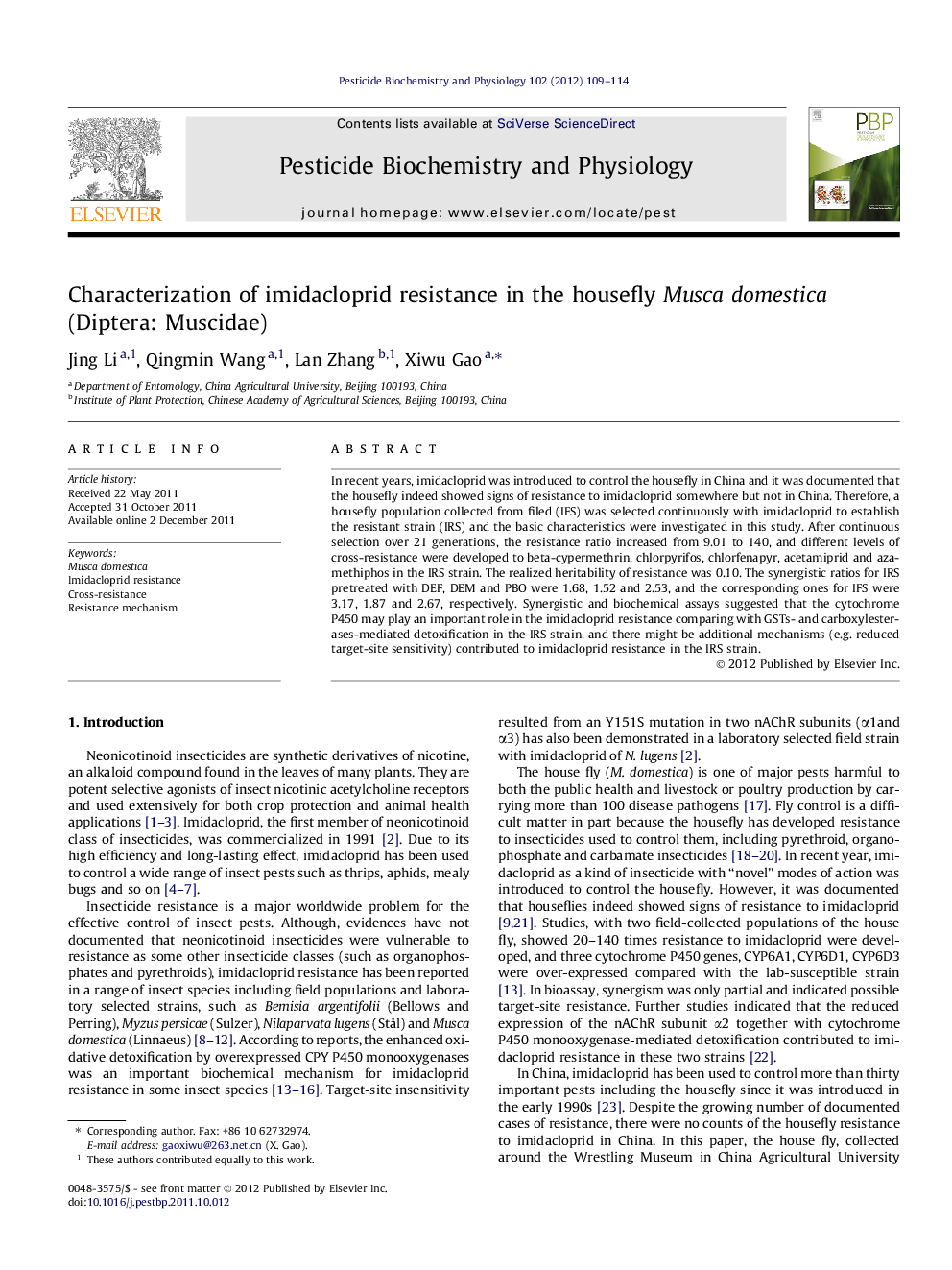| Article ID | Journal | Published Year | Pages | File Type |
|---|---|---|---|---|
| 2009729 | Pesticide Biochemistry and Physiology | 2012 | 6 Pages |
In recent years, imidacloprid was introduced to control the housefly in China and it was documented that the housefly indeed showed signs of resistance to imidacloprid somewhere but not in China. Therefore, a housefly population collected from filed (IFS) was selected continuously with imidacloprid to establish the resistant strain (IRS) and the basic characteristics were investigated in this study. After continuous selection over 21 generations, the resistance ratio increased from 9.01 to 140, and different levels of cross-resistance were developed to beta-cypermethrin, chlorpyrifos, chlorfenapyr, acetamiprid and azamethiphos in the IRS strain. The realized heritability of resistance was 0.10. The synergistic ratios for IRS pretreated with DEF, DEM and PBO were 1.68, 1.52 and 2.53, and the corresponding ones for IFS were 3.17, 1.87 and 2.67, respectively. Synergistic and biochemical assays suggested that the cytochrome P450 may play an important role in the imidacloprid resistance comparing with GSTs- and carboxylesterases-mediated detoxification in the IRS strain, and there might be additional mechanisms (e.g. reduced target-site sensitivity) contributed to imidacloprid resistance in the IRS strain.
Graphical abstract•The housefly developed 140-fold resistance to imidacloprid with cross-resistance to acetamiprid, beta-cypermethrin, azamethiphos and chlorfenapyr.•The cytochrome P450 played an important role in the housefly resistance to imidacloprid.Figure optionsDownload full-size imageDownload as PowerPoint slide
